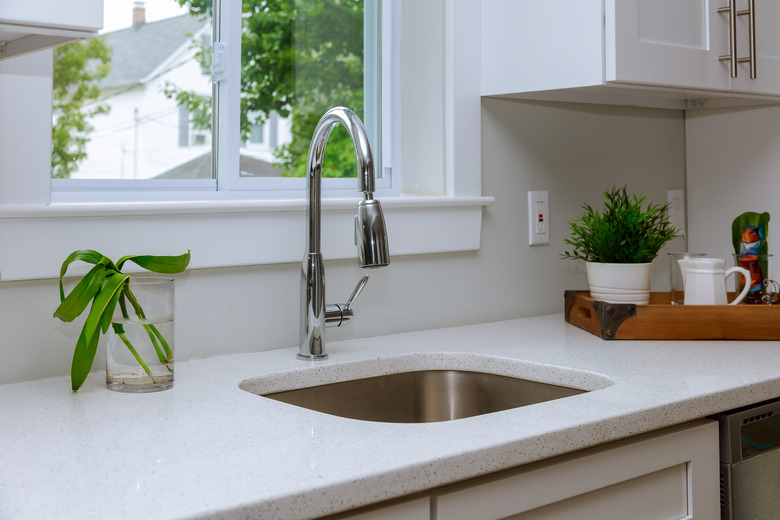How To Remove A Price Pfister Faucet
If you have to repair a kitchen or bathroom faucet, the procedure can vary quite a bit depending on the model, but when you're removing a faucet, the procedure is pretty much the same for all of them. However, if you have to remove a Price Pfister kitchen faucet with a pull-down spout or sprayer, you'll have to disconnect the spout, and that procedure may vary.
Price Pfister has been in business since 1910, but since 2010, the "Price" is gone and it's known simply as Pfister. The company publishes how-to videos that apply to most of its faucet models, and they're helpful for anyone wanting to remove a faucet. For example, removal is the reverse of the Pfister Ladera faucet installation, and the same is true for most other models.
Pfister Faucet Parts Are Similar to Those of Other Models
Pfister Faucet Parts Are Similar to Those of Other Models
Pfister has been making faucets for a long time and has supplied a variety of different parts over the years to hold the faucet to the sink deck, but none of these are radically different from the parts other manufacturers use. In all likelihood, to remove a Pfister faucet, you'll have to unscrew a retaining nut. The procedure is straightforward enough, but it can be complicated by the fact that the nut is frozen with corrosion.
If you still have the box containing all the Pfister faucet parts that originally came with the faucet, you might find a long socket wrench. This tool is invaluable for removing the faucet, but if you don't have one, a basin wrench will also do the job. Besides this, you'll need a wrench, one or two pairs of locking pliers and possibly a hacksaw.
The Procedure for Removing a Pfister Faucet
The Procedure for Removing a Pfister Faucet
Before you begin the removal procedure, you'll want to clear out the sink cabinet to give yourself room to move. You'll probably also want to disconnect and remove the P-trap, although this isn't essential. Get a good headlamp that will stay on your head so you'll be able to see what you're doing.
- Turn off the hot and cold shutoff valves and open the faucet to relieve pressure.
- Disconnect the faucet supply hoses from the shutoff valves by unscrewing the connectors with locking pliers or a wrench. You can also disconnect the hoses from the faucet, but this isn't absolutely necessary.
- Uncouple the hoses connecting the spout and sprayer to the faucet diverter. The procedure depends on the type of connector.
- Use the Pfister socket wrench or a basin wrench to loosen the nuts holding the faucet to the sink deck. Expect the nuts to be difficult to turn. You may have to spray lubricant on them to dissolve rust. Wait for 10 minutes after spraying the lubricant to give it time to work.
- Lift the faucet off the sink deck after removing the retaining nuts. Some older single-handle faucets have copper tubes that may be bent and won't fit through the hole in the sink. If you're not going to reuse the faucet, it's sometimes easiest to simply cut off the connectors with a hacksaw.
- Clean all the plumber's putty off the sink deck in preparation for the new faucet.
Disconnecting the Spout and Sprayer Hoses
Disconnecting the Spout and Sprayer Hoses
Modern Pfister faucets often come with quick-connect hoses for the pull-down spout, sprayer and handles for widespread models. There are actually four different types, but most work by pushing a tab while you push the connector together. This releases the connector, and you can simply pull it apart.
Some older faucets have connectors that you must unscrew with locking pliers. Hold one side of the connection steady with pliers while you unscrew the connector by turning it counterclockwise. If you aren't sure how to disconnect these hoses, check the installation instructions on the Pfister site.
